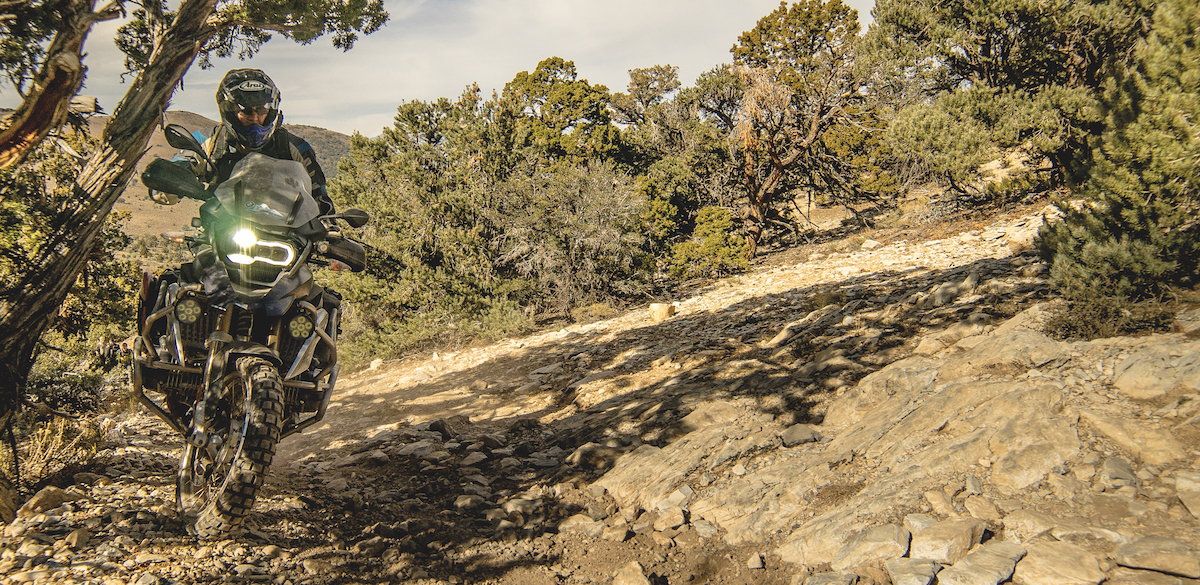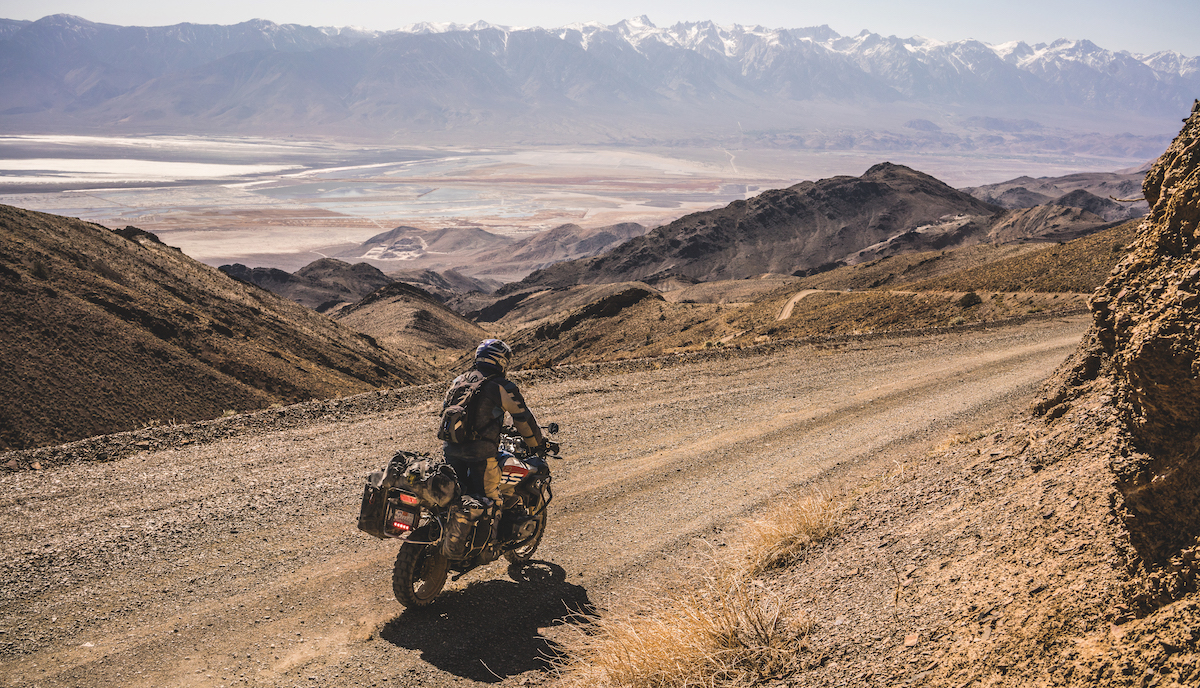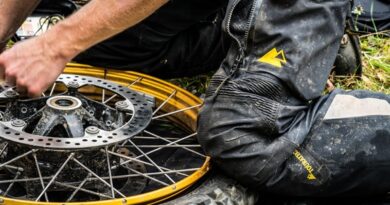Mapping the California BDR South
Dan Schoo was born and raised in the rich, rural farmlands of northern Iowa riding three-wheelers and dirt bikes. After college, Schoo moved to Chicago to begin his career in engineering and after enduring the cold and windy city as long as he could, moved to California’s Bay area to continue his engineering career.
 Finding paradise, once there two of the first things he did was to buy a convertible and a 2005 BMW R 1200 GS, a motorcycle that would change his life.
Finding paradise, once there two of the first things he did was to buy a convertible and a 2005 BMW R 1200 GS, a motorcycle that would change his life.
“It was a time for me to explore California, the western United States and Mexico, and there is absolutely no better way to do that than by getting off the beaten path on an adventure motorcycle,” Schoo said.
Soon, Schoo became absolutely addicted to seeing things in places where few people had the opportunity to go. Along the way, a buddy who also happened to own a BMW Motorrad dealership and was contemplating retirement, asked him about buying his dealership. Schoo was tempted, but the time wasn’t right.
Following the financial collapse in 2008 and the following recession, Schoo found his work in engineering and with startups to be reaching a natural conclusion. Not knowing what to do next, he set off on a long ride to figure out the next phase of his life. Upon his return home, he found a message on his answering machine from BMW North America asking if he had any interest in opening a new dealership in the Riverside area. Based on his previous experience, startups were more appealing than purchasing an established business, and after a few meetings and a lot of hustle, in April of 2010 Schoo opened BMW Motorcycles of Riverside. After opening the shop, Schoo promised himself that he’d always make time to ride and has worked that promise into the culture of the shop.
 As his riding continually took him further from home, Schoo joined the BMW MOA. He said, “I’ve found that connecting with other MOA members and the MOA’s relationship with Medjet Assist to be extremely beneficial, especially when riding thousands of miles from home or in foreign countries.
As his riding continually took him further from home, Schoo joined the BMW MOA. He said, “I’ve found that connecting with other MOA members and the MOA’s relationship with Medjet Assist to be extremely beneficial, especially when riding thousands of miles from home or in foreign countries.
“I have been an early supporter of the BDR, which is fully aligned with my passion of riding adventure bikes in the backcountry. We have shown all of the movie premieres at the dealership and support the fundraising activities of the BDR.
 “When the opportunity came to be part of the team to develop the California BDR route, I immediately raised my hand and was eager to share my experiences of riding the California deserts and mountains and put to use the thousands of miles of off-road tracks I accumulated over the years. Sponsoring the CABDR South was a natural extension of my love of the backcountry and the mission of BMW Motorcycles of Riverside. We proudly support what the BDR stands for, including knowledgeable, safe and responsible off-road backcountry riding, training activities, and the preservation of access to trails and roads.”
“When the opportunity came to be part of the team to develop the California BDR route, I immediately raised my hand and was eager to share my experiences of riding the California deserts and mountains and put to use the thousands of miles of off-road tracks I accumulated over the years. Sponsoring the CABDR South was a natural extension of my love of the backcountry and the mission of BMW Motorcycles of Riverside. We proudly support what the BDR stands for, including knowledgeable, safe and responsible off-road backcountry riding, training activities, and the preservation of access to trails and roads.”
The California BDR route begins along the Colorado River at the border of California, Arizona, and Mexico. It then proceeds north through desolate desert areas, touching the river in a few places before crossing the Mojave Desert and the Mojave Natural Preserve. The route then enters the southern part of Death Valley and crosses into the Owens Valley at the Cerro Gordo ghost town. From there, the route runs along the Owens Valley with an expert option taking riders through the White Mountains, before crossing the Volcanic Tablelands and finally ending near Benton, California.
 According to Schoo, it was quite challenging to settle on an actual route for the CABDR South. There were many choices with a vast area to traverse. “We finally agreed to shorten the route by making it a little more direct to keep the trip to seven or eight days. While that added a bit more difficulty level in certain areas, it truly made the word “backcountry” the operative descriptor of the route as so much of it is truly remote. During the expedition ride, we mostly dry-camped and needed to carry in our own food and water. To do that, we usually stopped for gas late every afternoon and resupplied with water and food for dinner that night, and for breakfast and lunch the next day. We did stay at a hot spring motel outside of Death Valley and at Benton Hot Springs the final night.”
According to Schoo, it was quite challenging to settle on an actual route for the CABDR South. There were many choices with a vast area to traverse. “We finally agreed to shorten the route by making it a little more direct to keep the trip to seven or eight days. While that added a bit more difficulty level in certain areas, it truly made the word “backcountry” the operative descriptor of the route as so much of it is truly remote. During the expedition ride, we mostly dry-camped and needed to carry in our own food and water. To do that, we usually stopped for gas late every afternoon and resupplied with water and food for dinner that night, and for breakfast and lunch the next day. We did stay at a hot spring motel outside of Death Valley and at Benton Hot Springs the final night.”
Schoo’s favorite part of the CABDR was riding through the Joshua trees in the higher elevation sections of the Mojave Desert. “It’s a special feeling to see such rare sights in this desolate and hard to reach area. Being all alone in the Mojave is such an awesome and humbling experience. Also, seeing the many ancient Indian petroglyphs along the route is something that never leaves my mind. How old are they? What do they mean? No one knows,” he said.
 The CABDR takes rides through expansive vistas where the extreme desolation of much of the route is absolutely stunning. The extreme geographical features of southern California are in full view, especially when riding between the highest point in the contiguous 48 states (Mount Whitney) and the lowest point (Badwater, Death Valley) There are not many easy miles, but all are stunning. The route also features spectacular views every day, many hot springs, ghost towns and abandoned mines that are the remnants of the area’s storied history.
The CABDR takes rides through expansive vistas where the extreme desolation of much of the route is absolutely stunning. The extreme geographical features of southern California are in full view, especially when riding between the highest point in the contiguous 48 states (Mount Whitney) and the lowest point (Badwater, Death Valley) There are not many easy miles, but all are stunning. The route also features spectacular views every day, many hot springs, ghost towns and abandoned mines that are the remnants of the area’s storied history.
“It was an unforgettable experience,” Schoo said.
It is suggested that a large dose of common sense is required for anyone thinking of riding this route. The weather conditions can range from extreme and deadly heat to snow, quite possibly in the same trip.
 When Schoo was planning the route, he said his group had ridden most sections multiple times, and their experience was very different each time. Where a road or double-track was easy and fast one time, a few months later the same track was virtually impassable. Summertime monsoon thunderstorms crisscross the desert and can radically change the landscape, and with the distance involved, riders will invariably run into some unexpected challenges.
When Schoo was planning the route, he said his group had ridden most sections multiple times, and their experience was very different each time. Where a road or double-track was easy and fast one time, a few months later the same track was virtually impassable. Summertime monsoon thunderstorms crisscross the desert and can radically change the landscape, and with the distance involved, riders will invariably run into some unexpected challenges.
The route is extremely remote with long distances offering no cell phone communication making riding with a partner and some form of satellite communication essential.
 Schoo also suggests riders pack light and make sure their bikes are well-prepared and inspected every day to avoid breakdowns. Riders will be on their own and many stretches of the route require self-rescue. Do not get fixated on specific time frames and be prepared with maps, gas, food, water, shelter and the mental agility to change plans as necessary.
Schoo also suggests riders pack light and make sure their bikes are well-prepared and inspected every day to avoid breakdowns. Riders will be on their own and many stretches of the route require self-rescue. Do not get fixated on specific time frames and be prepared with maps, gas, food, water, shelter and the mental agility to change plans as necessary.
Schoo said, “With every epic ride my greatest memory is always the feeling of camaraderie I’ve created with my riding partners. These rides require teamwork, with everyone putting their heads together to solve problems and make good decisions along the way. I will forever appreciate the lasting friendships I’ve made on this ride.”
Originally published in the October 2018 edition of BMW Owners News.



